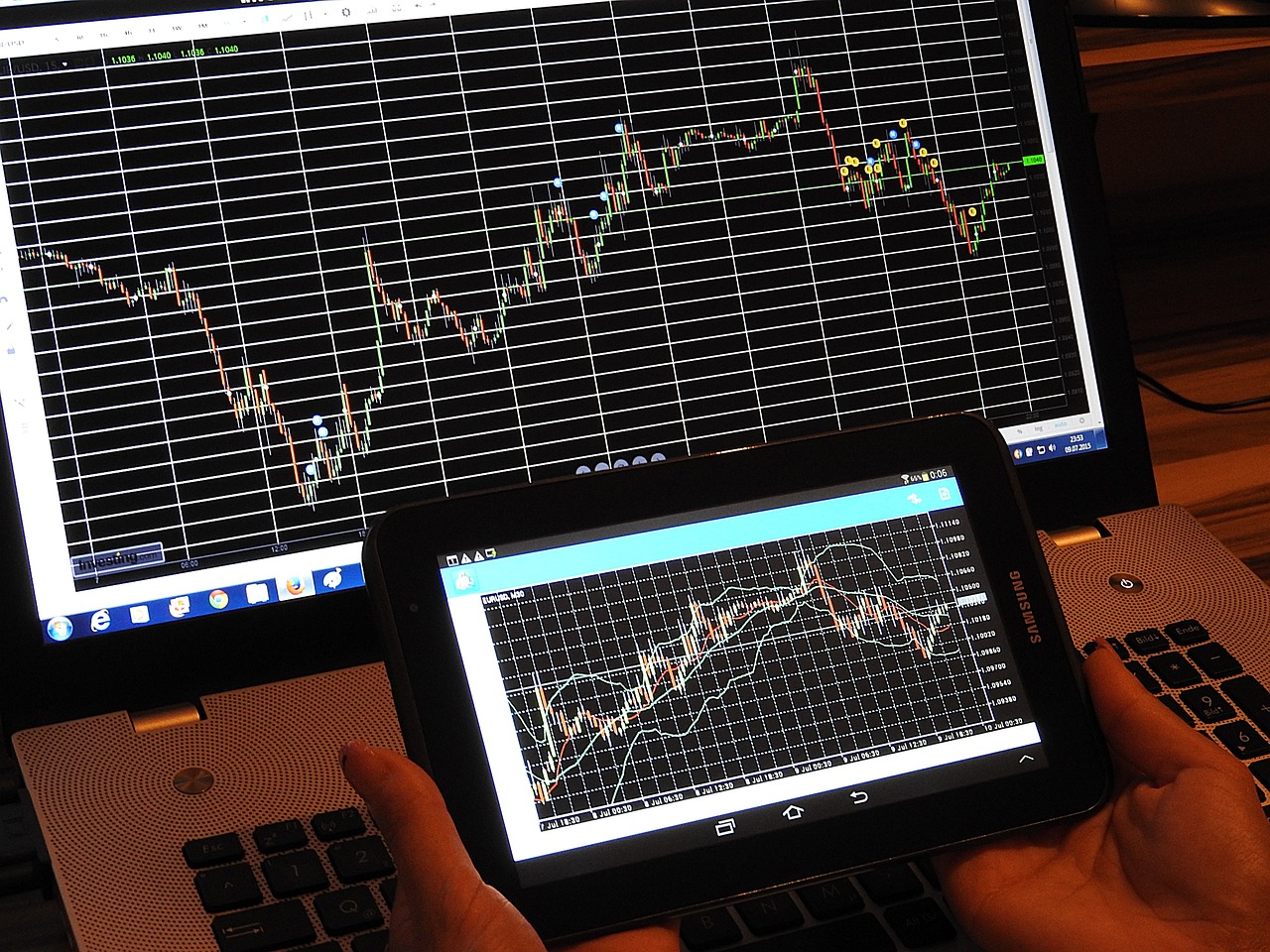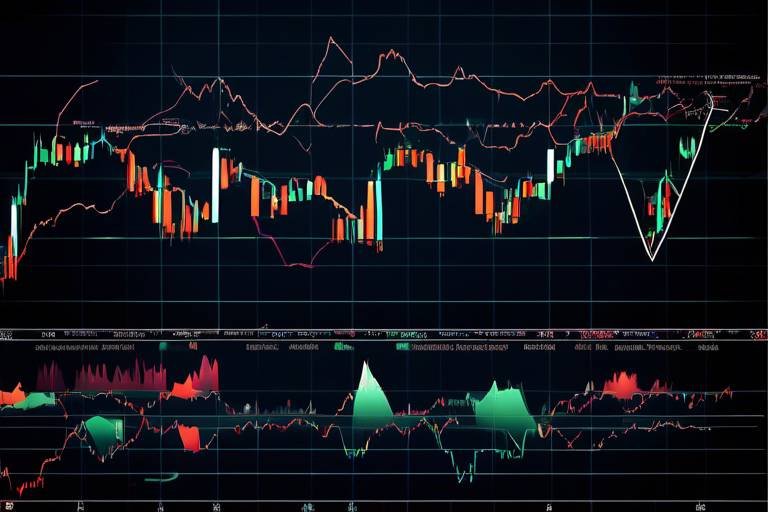How to Analyze Your Trading Performance for Continuous Improvement
In the fast-paced world of trading, the journey to success is often riddled with ups and downs. Every trader, whether a novice or a seasoned professional, must embrace the concept of continuous improvement. But how do you get there? The answer lies in analyzing your trading performance. Just like a sports coach reviews game footage to identify strengths and weaknesses, traders must scrutinize their past trades to enhance their strategies. This article explores effective methods and strategies for analyzing trading performance, enabling traders to identify strengths, weaknesses, and opportunities for growth in their trading practices.
Key performance metrics are essential for evaluating trading success. These metrics serve as the backbone of your trading analysis, helping you to make informed decisions. Some of the most important metrics to monitor include:
- Win Rate: This is the percentage of trades that are profitable. A higher win rate often correlates with a successful trading strategy.
- Risk-Reward Ratio: This ratio compares the potential profit of a trade to its potential loss. Understanding this can help you manage your risk effectively.
- Average Trade Duration: This metric indicates how long you typically hold a trade. It can provide insights into your trading style and strategy effectiveness.
By keeping an eye on these metrics, you can pinpoint areas that need improvement and capitalize on your strengths.
Establishing clear and measurable trading goals is vital for improvement. Without goals, traders can easily drift aimlessly, much like a ship without a compass. Setting realistic objectives that align with your trading strategy and personal aspirations can provide direction and motivation. Ask yourself: what do you want to achieve? Is it consistent profitability, mastering a specific trading strategy, or perhaps improving your emotional control during trades?
Differentiating between short-term and long-term goals helps in creating a balanced trading plan. Short-term goals might include daily or weekly profit targets, while long-term goals could involve achieving a certain percentage return over a year. Both types of goals can complement each other, creating a roadmap that guides your trading journey.
Using the SMART criteria—Specific, Measurable, Achievable, Relevant, Time-bound—can enhance goal-setting effectiveness. For instance, instead of saying, "I want to be a better trader," you might set a goal like, "I will increase my win rate to 60% within the next three months by analyzing my past trades and adjusting my strategy." This clarity not only motivates you but also provides a clear path to follow.
Regularly reviewing and adjusting goals ensures they remain relevant. The trading landscape is ever-changing, and what worked yesterday might not work tomorrow. Flexibility is key in adapting to market changes and personal growth. Set aside time each month to reflect on your progress and make necessary adjustments to your goals.
Keeping a trading journal is a powerful tool for self-reflection. Documenting your trades, including the rationale behind each decision, can uncover patterns that may not be immediately obvious. For example, you might notice a trend in your losses that corresponds with emotional trading decisions. By recognizing these patterns, you can inform your future decisions and improve your overall performance.
Evaluating trade outcomes is crucial for understanding what strategies work. This involves a deep dive into both winning and losing trades. What made a trade successful? Was it the strategy, timing, or perhaps market conditions? Conversely, analyzing losing trades can be just as enlightening. Did you let emotions dictate your decisions? Were there external factors that influenced your outcome?
Recognizing patterns in trading behavior can lead to better decision-making. For instance, you may find that you tend to overtrade after a series of losses. Understanding these behaviors can help you develop strategies to mitigate their impact on your trading performance.
Understanding the emotional factors that influence trading decisions is essential. Emotions like fear and greed can cloud judgment and lead to impulsive decisions. This section delves into how emotions can affect performance and strategies for managing them effectively. Techniques such as mindfulness, setting strict trading rules, and taking breaks can help you maintain emotional control during trades.
1. How often should I analyze my trading performance?
It's beneficial to analyze your performance regularly, ideally after each trading session or weekly. This helps you stay on top of your progress and adjust your strategies as needed.
2. What should I include in my trading journal?
Your trading journal should include details about each trade, such as entry and exit points, the rationale behind your decisions, emotional state during the trade, and the outcomes.
3. How can I improve my emotional control while trading?
Practicing mindfulness, setting clear trading rules, and taking breaks can significantly enhance your emotional control. It's crucial to recognize when emotions are influencing your decisions.

Understanding Performance Metrics
When it comes to trading, understanding your performance metrics is akin to a pilot checking their instruments before takeoff. Just as a pilot wouldn't fly blind, you shouldn't trade without a clear understanding of how you're performing. Key performance metrics serve as your navigational tools, guiding you toward success and helping you identify areas for improvement. So, what are these essential metrics that every trader should monitor? Let’s dive in.
First on the list is the win rate. This metric represents the percentage of trades that result in a profit. A higher win rate often indicates effective trading strategies, but it’s crucial to remember that it doesn't tell the whole story. A trader could have a high win rate yet still be losing money overall if their losing trades are significantly larger than their winning ones. Therefore, it’s important to pair the win rate with other metrics to get a complete picture.
Next, we have the risk-reward ratio. This ratio is a powerful tool that helps you evaluate the potential reward of a trade relative to its risk. For instance, if you risk $1 to potentially gain $3, your risk-reward ratio is 1:3. Understanding this ratio can help you make more informed decisions about which trades to take. Ideally, a favorable risk-reward ratio should be over 1:2, meaning your potential reward is at least twice your potential loss.
Additionally, tracking the average trade duration can provide insights into your trading style. Are you a day trader who holds positions for a few minutes or hours, or are you a swing trader who holds for days or weeks? Knowing your average trade duration helps in aligning your trading strategy with your lifestyle and risk tolerance. It’s important to remember that each trader is unique, and what works for one may not work for another.
To put these metrics into perspective, let’s consider a simple table that summarizes these key performance indicators:
| Performance Metric | Description |
|---|---|
| Win Rate | The percentage of profitable trades out of total trades. |
| Risk-Reward Ratio | The ratio of potential profit to potential loss in a trade. |
| Average Trade Duration | The average length of time a trade is held. |
Monitoring these metrics regularly is crucial for continuous improvement. By understanding where you stand with these figures, you can make informed adjustments to your trading strategy. For instance, if your win rate is low but your risk-reward ratio is high, it might be worth examining your entry and exit strategies. Conversely, if you find that your average trade duration is longer than you’re comfortable with, you might consider adjusting your trading style to better align with your goals.
In conclusion, performance metrics are the backbone of effective trading analysis. They not only help you gauge your current performance but also illuminate the path toward improvement. By keeping a close eye on your win rate, risk-reward ratio, and average trade duration, you can navigate the often turbulent waters of trading with greater confidence and clarity.

Setting Clear Goals
When it comes to trading, setting clear goals is like having a roadmap for a long journey. Without a destination in mind, you could end up wandering aimlessly, missing out on opportunities and potentially making costly mistakes. So, how do you ensure your trading journey is purposeful? It all starts with establishing clear and measurable objectives that align with your trading strategy and personal aspirations. Think of your goals as the compass that guides your trading decisions, helping you stay on track even when the market gets volatile.
First and foremost, it’s crucial to differentiate between short-term and long-term goals. Short-term goals might include daily or weekly targets, such as achieving a specific win rate or limiting losses to a certain percentage. On the other hand, long-term goals could involve broader objectives, like growing your trading account by a certain percentage over the year. By balancing both types of goals, you create a robust trading plan that allows for immediate wins while keeping an eye on the bigger picture.
Now, let’s dive into the SMART Goals Framework. This method helps you refine your objectives to make them more effective. SMART stands for:
- Specific: Clearly define what you want to achieve. Instead of saying, "I want to be a better trader," specify, "I want to increase my win rate to 60% in the next three months."
- Measurable: Ensure your goals can be quantified. This might mean tracking your performance metrics regularly to see if you’re on target.
- Achievable: Set realistic goals. While it’s great to aim high, ensure that your objectives are attainable based on your current skills and market conditions.
- Relevant: Your goals should align with your overall trading strategy and personal circumstances. Ask yourself, "Does this goal contribute to my long-term success?"
- Time-bound: Establish a deadline for your goals. This creates a sense of urgency and helps you stay focused.
Once you’ve set your goals using the SMART criteria, it’s equally important to regularly review and adjust them. The markets are dynamic, and what works today might not work tomorrow. By checking in on your progress and making necessary adjustments, you ensure that your goals remain relevant and achievable. This flexibility is essential for adapting to market changes and your personal growth as a trader.
In summary, setting clear goals is a foundational step in your trading journey. It provides direction, helps you measure progress, and keeps you motivated. Remember, trading is not just about making money; it’s about developing a disciplined approach that leads to continuous improvement. So, grab your compass, map out those goals, and get ready to navigate the exciting world of trading!

Short-term vs Long-term Goals
When embarking on your trading journey, it's crucial to understand the distinction between short-term and long-term goals. Think of your trading career as a marathon rather than a sprint. Short-term goals are like the quick bursts of speed you take during the race, while long-term goals are the steady pace that keeps you moving toward the finish line. Both types of goals play a significant role in shaping your trading strategy and overall success.
Short-term goals typically focus on immediate results and can be set for days, weeks, or even months. For instance, you might aim to achieve a specific percentage return on your investments within the next quarter. These goals are often tactical and can include:
- Improving your win rate by a certain percentage.
- Reducing your average trade duration.
- Testing a new trading strategy within a set timeframe.
On the other hand, long-term goals are more about your overarching vision for your trading career. These are the dreams that keep you motivated during the inevitable ups and downs of the market. Long-term goals can span several years and might include:
- Building a sustainable trading income.
- Achieving financial independence through trading.
- Developing a diverse portfolio that withstands market fluctuations.
It's essential to recognize that short-term and long-term goals should not be viewed in isolation. Instead, they should complement each other. Short-term goals provide the necessary motivation and actionable steps to help you reach your long-term aspirations. For example, if your long-term goal is to become a full-time trader, setting short-term goals for consistent monthly returns can help you build the necessary skills and confidence over time.
Moreover, regularly revisiting and adjusting both types of goals is vital. The market is ever-changing, and what worked yesterday may not work tomorrow. By remaining flexible and open to change, you can adapt your short-term goals to align with your long-term vision, ensuring that you stay on track even when the market throws you curveballs.
In conclusion, understanding the balance between short-term and long-term goals is essential for any trader. By setting clear, actionable short-term objectives that feed into your broader long-term vision, you create a roadmap for success that can guide your trading decisions and help you navigate the complexities of the market.
- What is the difference between short-term and long-term trading? Short-term trading focuses on quick gains and often involves holding positions for days or weeks, while long-term trading is about building wealth over years.
- How can I set effective trading goals? Use the SMART criteria: Specific, Measurable, Achievable, Relevant, and Time-bound to create clear goals that guide your trading strategy.
- Why is it important to review my trading goals regularly? Regular reviews help ensure that your goals remain relevant and aligned with market conditions and your personal growth.

SMART Goals Framework
Setting goals is like laying the foundation for a house; without a solid base, everything else can crumble. The is a powerful tool that can transform your trading ambitions into actionable plans. But what exactly does SMART stand for? Let’s break it down:
- Specific: Your goals should be clear and specific. Instead of saying, "I want to be a better trader," you might say, "I want to increase my win rate to 60% over the next three months." This clarity helps you focus your efforts.
- Measurable: It’s crucial to have metrics to track your progress. For example, if your goal is to increase your trading account by 20%, ensure you can measure your performance against this target regularly.
- Achievable: While it’s great to aim high, your goals should also be realistic. Setting an unattainable target can lead to frustration. Assess your current skills and market conditions to set achievable goals.
- Relevant: Your goals should matter to you and align with your broader trading strategy. Ask yourself, "Does this goal contribute to my overall trading success?" If not, it may be time to rethink it.
- Time-bound: Goals need deadlines. Instead of saying, "I want to improve my trading," specify when you want to achieve this improvement. For instance, "I aim to refine my strategy by the end of this quarter." This urgency can motivate you to take action.
Implementing the SMART framework in your trading practice doesn’t just enhance your goal-setting effectiveness; it also fosters accountability. When you have clear objectives, you’re more likely to stick to your trading plan and evaluate your progress regularly. Imagine driving a car without a destination; you might end up anywhere! Similarly, without SMART goals, your trading journey could be aimless.
To illustrate how this framework can be applied in trading, consider the following example:
| SMART Criteria | Example Goal |
|---|---|
| Specific | Increase my win rate to 60% in the next three months. |
| Measurable | Track my trades weekly to assess win/loss ratio. |
| Achievable | Based on current performance, a 60% win rate is realistic. |
| Relevant | This goal aligns with my desire to enhance my trading skills. |
| Time-bound | Achieve this goal by the end of the next quarter. |
By following the SMART framework, you can create a structured approach to your trading goals, making it easier to track progress and make adjustments as needed. Remember, the journey of a thousand miles begins with a single step, and with SMART goals, you’re more likely to stay on the right path!
Q: How often should I review my SMART goals?
A: It's advisable to review your SMART goals at least once a month. This allows you to assess your progress and make necessary adjustments based on market conditions or personal growth.
Q: Can I have multiple SMART goals at once?
A: Absolutely! You can set multiple SMART goals, but be sure to prioritize them. Focus on a few key areas to avoid feeling overwhelmed.
Q: What if I don’t achieve my SMART goals?
A: Don't be discouraged! Use it as a learning opportunity. Analyze what went wrong and adjust your strategies or goals accordingly.

Reviewing and Adjusting Goals
When it comes to trading, the only constant is change. Markets fluctuate, strategies evolve, and personal circumstances shift. This is why reviewing and adjusting your trading goals is not just a good practice; it’s essential for ongoing success. Think of your trading goals as a roadmap. If you hit a detour, you wouldn’t just sit there; you’d find a new route, right? The same applies to trading. Regularly revisiting your goals helps ensure that they align with your current market conditions and personal aspirations.
First and foremost, set aside time on a regular basis—be it weekly, monthly, or quarterly—to assess your progress. During these reviews, ask yourself critical questions: Are you meeting your targets? Are your strategies still effective? Are there new opportunities or challenges that have emerged since your last review? By asking these questions, you can gain valuable insights into your trading performance and make necessary adjustments.
Moreover, it's important to maintain flexibility. Just as a sailor adjusts their sails to catch the wind, traders must be willing to modify their goals based on market dynamics. If you find that a particular goal is no longer relevant or achievable, don't hesitate to revise it. This might mean scaling back your expectations or even setting more ambitious targets as you grow more confident in your trading abilities.
Another aspect to consider is the emotional impact of your trading journey. Sometimes, achieving a goal can lead to complacency, while falling short can result in frustration. Use your reviews to assess not just the numbers, but your emotional state as well. Are you feeling confident, or are you second-guessing your decisions? Acknowledging these feelings can help you recalibrate your goals and strategies accordingly.
To help you visualize your progress, consider creating a simple table that tracks your goals, current status, and any necessary adjustments. Here’s a quick example:
| Goal | Current Status | Adjustment Needed |
|---|---|---|
| Achieve a 60% win rate | Currently at 55% | Review strategy and refine entry points |
| Increase average trade duration | Currently at 3 days | Set a target of 5 days for swing trades |
In summary, reviewing and adjusting your trading goals is not just a task; it’s a crucial part of your trading journey. By regularly evaluating your progress, remaining flexible, and considering the emotional aspects of trading, you can ensure that your goals remain relevant and achievable. This ongoing process will not only enhance your performance but also contribute to your overall growth as a trader.
- How often should I review my trading goals? It's recommended to review your goals at least once a month, but you can adjust this frequency based on your trading activity.
- What should I do if I’m not meeting my goals? Analyze the reasons behind your performance. It may be time to adjust your strategies or set more realistic goals.
- Can emotional factors affect my trading goals? Absolutely! Emotions play a significant role in trading, so it’s important to consider how you feel about your performance during your reviews.

Utilizing Trading Journals
Keeping a trading journal is akin to having a personal coach by your side, guiding you through the ups and downs of the trading world. It’s not just a record of your trades; it’s a powerful tool for self-reflection and growth. By documenting your trades, you can uncover patterns that might otherwise go unnoticed. Think of it as a treasure map that leads you to your strengths and weaknesses, helping you navigate the often turbulent seas of trading.
When you jot down the details of each trade, including the rationale behind your decisions, the emotional state you were in, and the outcome, you begin to see a clearer picture of your trading habits. This practice allows you to analyze your performance over time, identify what works, and recognize what doesn’t. For instance, you might discover that you tend to make impulsive decisions after a series of losses, or that certain market conditions consistently yield better results for you.
Moreover, a trading journal can also serve as a motivational tool. On days when the market feels particularly challenging, revisiting past successes can reignite your confidence and remind you of your capabilities. You can include sections in your journal that highlight your achievements, no matter how small, to keep your spirits high.
To make the most of your trading journal, consider including the following elements:
- Date and Time: Record when you entered and exited each trade.
- Market Conditions: Note the prevailing market trends and any relevant news that may have influenced your decisions.
- Trade Details: Include the asset traded, entry and exit points, and the size of the position.
- Emotional State: Reflect on how you felt before, during, and after the trade.
- Outcome: Document whether the trade was a win or a loss and the reasons behind it.
By systematically analyzing this information, you can create a feedback loop that informs your future trading strategies. For example, if you notice a pattern where trades initiated with a clear plan yield better results than those made impulsively, you can adjust your approach accordingly. This methodical analysis transforms your trading journal from a simple log into a dynamic tool for continuous improvement.
In conclusion, utilizing a trading journal is an essential practice for any trader looking to enhance their performance. It not only helps in tracking progress and learning from past experiences but also fosters a deeper understanding of one’s trading psychology. So, grab a notebook or set up a digital journal today, and start your journey toward becoming a more disciplined and successful trader!
Q: How often should I update my trading journal?
A: It's best to update your trading journal after each trade. This ensures you capture your thoughts and emotions while they are fresh, allowing for more accurate reflections.
Q: Can I use a digital format for my trading journal?
A: Absolutely! Many traders prefer digital formats as they can easily organize, search, and analyze their data. You can use spreadsheet software or specialized trading journal apps.
Q: What if I don’t know what to write about?
A: Start with the basics! Document the trade details, your emotional state, and your rationale. Over time, you’ll find it easier to expand on your thoughts and insights.
Q: How can I use my trading journal to set better goals?
A: By analyzing your past trades, you can identify areas for improvement. Use these insights to set specific, measurable goals that target your weaknesses and build on your strengths.

Analyzing Trade Outcomes
Evaluating trade outcomes is crucial for understanding what strategies work and what doesn’t. Think of it as a treasure hunt; each trade is a clue that can lead you to the ultimate prize of consistent profitability. By diving deep into your trading history, you can uncover insights that will help refine your approach and enhance your performance. So, how do you go about analyzing these outcomes effectively? Let’s break it down.
First, you need to categorize your trades into winning and losing outcomes. This simple classification can provide a wealth of information. For instance, you might find that your winning trades tend to share certain characteristics, such as:
- Specific market conditions
- Particular technical indicators
- Consistent entry and exit points
On the flip side, losing trades might reveal a pattern of emotional decision-making or a lack of adherence to your trading plan. By identifying these trends, you can start to understand the why behind your successes and failures.
Another essential aspect of analyzing trade outcomes is calculating your performance metrics. Here are some key metrics to consider:
| Metric | Formula | Significance |
|---|---|---|
| Win Rate | (Number of Winning Trades / Total Trades) x 100 | Indicates the percentage of trades that were profitable. |
| Risk-Reward Ratio | Average Gain per Winning Trade / Average Loss per Losing Trade | Helps assess whether the potential reward justifies the risk taken. |
| Average Trade Duration | Total Time of All Trades / Total Trades | Shows how long trades are typically held, which can inform your strategy. |
By keeping track of these metrics, you can gain a clearer picture of your trading performance over time. Just like a coach reviewing game footage, analyzing your trades allows you to pinpoint areas for improvement.
Moreover, it's vital to analyze both winning and losing trades to gain valuable insights. For example, when reviewing a winning trade, consider what factors contributed to its success. Did you follow your strategy meticulously? Were there external market conditions that favored your trade? Conversely, when dissecting a losing trade, ask yourself: Did I deviate from my plan? Was my analysis flawed? This kind of reflection can foster a growth mindset, encouraging you to learn from each experience.
Lastly, don’t forget about the emotional impact on your trading. Emotions can cloud judgment and lead to impulsive decisions. Acknowledging how feelings like fear or greed influenced your trades can be an eye-opening experience. Consider maintaining a separate section in your trading journal dedicated to reflecting on your emotional state during each trade. This practice can help you recognize patterns in your emotional responses and develop strategies to manage them effectively.
In summary, analyzing your trade outcomes is not just about tallying wins and losses; it’s about understanding the story behind each trade. By categorizing outcomes, calculating key performance metrics, and reflecting on emotional influences, you can create a well-rounded view of your trading performance. This comprehensive analysis will not only inform your future strategies but also empower you to become a more disciplined and successful trader.
- What is the most important metric to track? While all metrics are important, the win rate is often considered crucial as it reflects your overall success rate in trading.
- How often should I analyze my trades? Regular analysis is key. Many traders review their trades weekly or monthly to stay on top of their performance.
- Can emotions really affect my trading? Absolutely! Emotions can lead to impulsive decisions, which is why it’s important to acknowledge and manage them effectively.

Identifying Patterns in Trades
When it comes to trading, recognizing patterns in your trades can be a game changer. Think of it like finding a rhythm in a song; once you catch the beat, everything starts to flow better. By analyzing your past trades, you can uncover trends that may not be immediately obvious, leading to more informed decisions in the future. Patterns can manifest in various forms, such as recurring mistakes, consistent profit zones, or specific market conditions that yield better outcomes. The key is to keep an open mind and be willing to dive into the data.
One effective way to identify these patterns is by maintaining a detailed trading journal. In this journal, you should document not only the trades you executed but also the context surrounding them. For instance, note the market conditions, your emotional state, and any external factors that might have influenced your decisions. Over time, as you review your journal, you may start to see certain patterns emerge. Perhaps you notice that you consistently perform better during specific market trends or that you tend to panic sell when your trades go against you. Recognizing these patterns is the first step toward improving your trading strategy.
Another essential aspect of identifying patterns is leveraging data analytics tools. Many traders use software that can analyze their trading history and provide insights into their performance. These tools can generate reports that highlight key metrics, such as your win rate in different market conditions or the average duration of your winning trades versus losing trades. By visualizing this data, you can spot trends more easily. For example, you might find that your win rate drops significantly in volatile markets, which could prompt you to adjust your strategy accordingly.
It's also important to consider the psychological patterns that may influence your trading behavior. Emotions play a significant role in trading decisions, and recognizing how your feelings impact your trades can help you make better choices. For instance, if you notice that you tend to overtrade when feeling anxious, you can implement strategies to manage that anxiety, such as setting strict trading limits or taking breaks during high-stress periods. By addressing both the technical and emotional aspects of trading, you can create a more holistic approach to identifying and understanding patterns.
In summary, identifying patterns in your trades is crucial for continuous improvement. By documenting your trades, utilizing data analytics, and reflecting on your emotional responses, you can uncover valuable insights that will enhance your trading strategy. Remember, trading is not just about numbers; it's about understanding the story behind those numbers and using that knowledge to navigate the markets more effectively.
- What types of patterns should I look for in my trading? Focus on recurring mistakes, consistent profit zones, and specific market conditions that yield better outcomes.
- How can a trading journal help me? A trading journal helps you document trades, market conditions, and emotional states, allowing you to identify trends over time.
- Are there tools to help analyze trading patterns? Yes, many data analytics tools can analyze your trading history and provide insights into your performance.
- What role do emotions play in trading? Emotions can significantly influence trading decisions, and recognizing their impact can help you make better choices.

Emotional Impact on Trading
Trading is not just about numbers, charts, and strategies; it's also a deeply emotional experience. The can be profound, influencing decisions and outcomes in ways that many traders might not fully recognize. Have you ever made a trade and immediately felt a wave of anxiety? Or perhaps you felt overconfident after a series of wins, leading you to make impulsive decisions? These emotional responses are common and can significantly affect your trading performance.
One of the most significant emotional factors in trading is fear. Fear of losing money can lead to hesitation in executing trades or even abandoning well-thought-out strategies. On the flip side, there's also the fear of missing out (FOMO), which often drives traders to enter positions based on hype rather than sound analysis. This emotional turmoil can cloud judgment and lead to poor trading decisions.
Another crucial emotion is greed. After a winning streak, traders might feel invincible, thinking they can do no wrong. This can lead to over-leveraging, ignoring stop-losses, and taking on excessive risk. It's essential to recognize this feeling and understand that every trading decision should be based on analysis, not emotions.
To manage these emotional impacts effectively, traders can adopt several strategies:
- Develop a Trading Plan: A solid trading plan serves as a roadmap, helping to keep emotions in check. It outlines entry and exit points, risk management strategies, and the rationale behind each trade.
- Practice Mindfulness: Techniques such as meditation or deep-breathing exercises can help traders stay grounded and focused, reducing anxiety and emotional reactions.
- Keep a Trading Journal: Documenting trades along with the emotions felt during each trade can help identify patterns in emotional responses, allowing traders to address them proactively.
Ultimately, understanding and managing the emotional aspect of trading is key to achieving consistent performance. By recognizing how emotions influence decisions, traders can develop a more disciplined approach, leading to better outcomes in the long run. Remember, trading is as much about mental fortitude as it is about market analysis.
Q: How can I control my emotions while trading?
A: To control emotions while trading, develop a comprehensive trading plan, practice mindfulness techniques, and maintain a trading journal to reflect on emotional patterns.
Q: What role does fear play in trading decisions?
A: Fear can lead to hesitation or rash decisions, impacting your trading strategy. Recognizing and addressing fear is crucial for making informed choices.
Q: How can I avoid FOMO in trading?
A: To avoid FOMO, stick to your trading plan and focus on analysis rather than market hype. Setting clear goals can also help you stay disciplined.
Frequently Asked Questions
- What are the key performance metrics I should track in trading?
Tracking key performance metrics is crucial for evaluating your trading success. Some essential metrics include your win rate, which indicates the percentage of profitable trades; the risk-reward ratio, which helps you understand the potential profit versus loss of each trade; and the average trade duration, which shows how long you typically hold your positions. Monitoring these metrics can provide valuable insights into your trading habits and help you identify areas for improvement.
- How can I set effective trading goals?
Setting effective trading goals involves establishing clear and measurable objectives that align with your overall trading strategy. Consider using the SMART goals framework: make your goals Specific, Measurable, Achievable, Relevant, and Time-bound. This approach will help you create a balanced trading plan that keeps you focused and motivated. Don't forget to regularly review and adjust your goals to ensure they remain relevant as market conditions change.
- What is the importance of a trading journal?
A trading journal is a powerful tool for self-reflection and improvement. By documenting your trades, you can uncover patterns in your trading behavior, identify strengths and weaknesses, and make informed decisions for future trades. It allows you to analyze both winning and losing trades, providing insights that can enhance your overall performance. Consistently using a trading journal can lead to continuous improvement in your trading practices.
- How can I analyze my trade outcomes effectively?
To analyze your trade outcomes effectively, focus on both winning and losing trades. Look for commonalities in your successful trades, such as specific strategies or market conditions, and identify what went wrong in losing trades. This analysis will help you recognize patterns in your trading behavior, allowing you to make necessary adjustments. Additionally, consider emotional factors that may have influenced your decisions, as understanding these can significantly impact your future performance.
- What role do emotions play in trading performance?
Emotions can have a profound impact on trading performance. Factors such as fear, greed, and overconfidence can lead to impulsive decisions and deviations from your trading plan. It's essential to recognize how emotions influence your trading behavior and develop strategies to manage them. Techniques such as mindfulness, setting strict trading rules, and maintaining a trading journal can help you stay grounded and make more rational decisions.



















